Fed raises rates by half a point, sees rates topping 5% in 2023
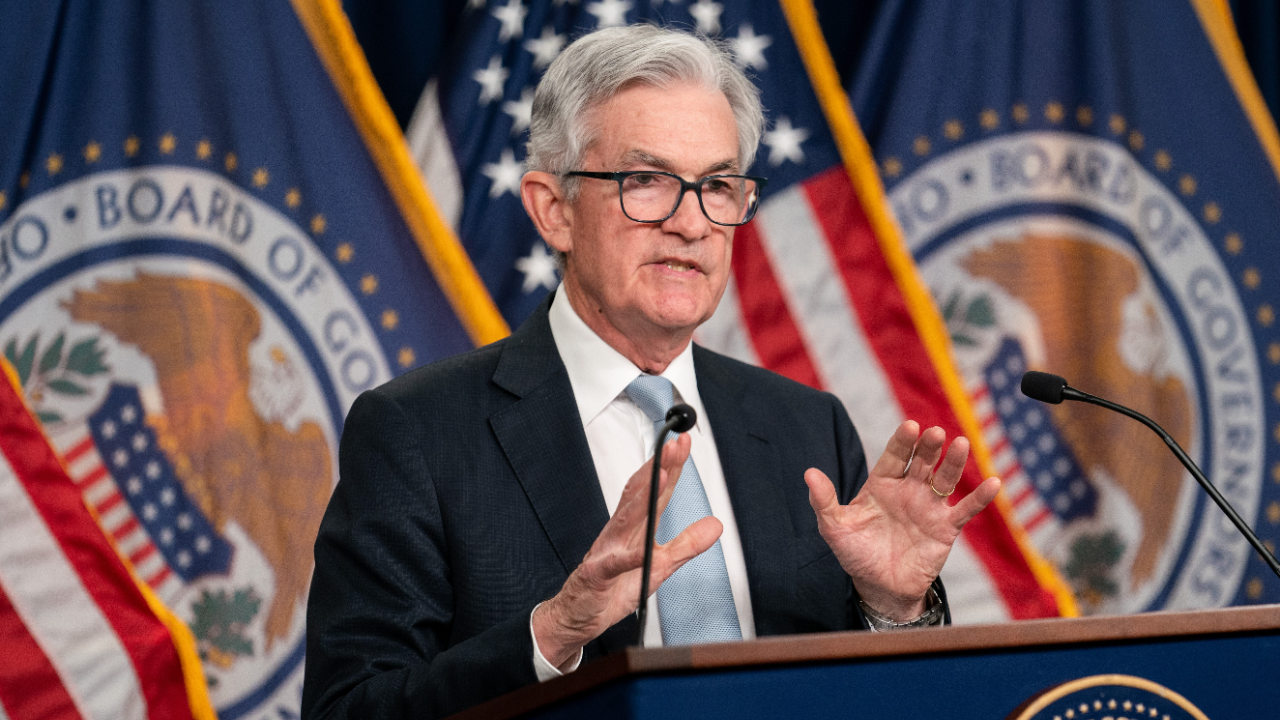
The Bankrate promise
At Bankrate we strive to help you make smarter financial decisions. While we adhere to strict , this post may contain references to products from our partners. Here's an explanation for .
The Federal Reserve raised interest rates by the smallest amount in seven months but penciled in even more rate hikes next year, signaling a commitment to continue slowing the economy just as inflation starts to show promising signs of heading in the right direction.
The Federal Open Market Committee (FOMC) increased rates by half a percentage point, bringing the target range for its key benchmark borrowing rate to 4.25-4.5 percent. It marks the seventh consecutive rate hike this year and takes interest rates back to levels not seen since late 2007 and early 2008. Nine months ago, rates were still at a rock-bottom level of near-zero percent.
The decision influences almost all borrowing and savings products in the market, from credit cards, car loans and mortgages to savings yields and certificates of deposit (CDs).
A half-point rate hike is still historically gargantuan, but it’s a notable downshift that foreshadows a new way officials plan to fight off price pressures in the upcoming year. After raising interest rates the most in a single year since the 1980s, policymakers want to start loosening the reins and hiking in smaller amounts to avoid tightening too much.
But they aren’t done yet. Fresh projections released along with the rate decision show borrowing costs in a target range of 5-5.25 percent by the end of 2023. Seven officials, however, see rates rising even higher than that. The highest estimate puts the Fed’s key interest rate in a 5.5-5.75 percent target range, which would be the highest since 2001. No officials, meanwhile, see rate cuts next year.
“The pace of rate increases is slowing, but consumers should be prepared for borrowing costs to move higher before leveling out in 2023,” says Greg McBride, CFA, Bankrate chief financial analyst. “The interest rate mantra for 2023 is, ‘higher for longer.'”
The new defensive play doesn’t mean the Fed is done raising interest rates or could soon cut borrowing costs, policy moves experts say are still a long ways in the distance. Instead, it signals U.S. central bankers are ready to raise rates in smaller increments and keep them high for a longer period of time to choke off inflation once and for all.
“It’s now not so important how fast we go,” said Federal Reserve Chair Jerome Powell in a post-meeting press conference. “It’s far more important to think ‘what is the ultimate level, and at a certain point, how long do we remain restrictive?'”
The Fed’s rate hike: What it means for you
Mortgages
You don’t have to remind would-be homebuyers just how much they’re impacted by Fed policy.
The 30-year fixed-rate mortgage more than doubled this year, surging to a 20-year high of 7.12 percent on Oct. 26 after kicking off the year at just 3.40 percent. But the weight of higher borrowing costs is letting up, and more good news could soon be on the horizon. The key financing rate has retreated for the past five weeks, hitting 6.51 percent on Dec. 14, according to Bankrate data.
To be sure, mortgage rates are still well above their 2021 lows and unlikely to return there anytime soon. And even as mortgage rates pull back, they haven’t offset the hit to buyer affordability this year, McBride says. A $300,000 mortgage with an annual percentage rate (APR) would’ve cost you about $1,303 in principal and interest a year ago, according to Bankrate’s mortgage calculator. Today, that payment would be $1,919.
But the pattern signals more about what’s in store for the economy in 2023 rather than Fed policy. Mortgage rates more closely follow the 10-year Treasury yield, which rises and falls based on investors’ expectations for inflation and economic growth.
Two months of cooler-than-expected inflation signal the hottest price surge in decades may be well past its peak. Since a Labor Department report showed prices in October rose 7.7 percent from a year ago, the key bond yield has fallen 51 basis points, while the 30-year mortgage rate has fallen by a similar amount.
As long as inflation looks like it’s heading in the right direction, homebuyers can expect more good news next year, even if the Fed continues to raise rates. Keep an eye on interest rates and compare offers from multiple lenders to ensure you find the best deal.
Borrowers
The picture doesn’t look as optimistic for consumers with high-cost credit card debt. Credit card APRs hit a record high of 19.04 percent on Nov. 9, no doubt a result of the Fed’s rapid tightening this year. They’ve only kept heading up since, surging to 19.42 percent on Dec. 14, according to Bankrate data.
Consumers will be rewarded with hundreds, if not thousands, of dollars in savings if they can part ways with those costly balances. Calculate if transferring your debt to a balance-transfer card with a 0 percent introductory offer — which usually comes with a fixed fee — could save you more money in the long run. Typically, those deals last for anywhere between 12 to 21 months.
Borrowers with fixed-rate debt will be safe anytime the Fed raises rates, but individuals with variable-rate loans should consider refinancing into a fixed loan to limit their exposure to higher rates.
Savers
Higher rates can be a boon to Americans’ wallets too, especially if they’re parking their cash in a nontraditional, online bank that pays in double digits above the national average. That’s because a higher fed funds rate leaves depository institutions with no choice but to lift yields, luring consumers to park their cash there.
The 14 banks ranked for Bankrate’s best high-yield savings accounts in July 2021 were offering an average yield of 0.51 percent, with a high of 0.55 percent and a low of 0.40 percent. At the time, that was about nine times the national average.
As of Dec. 7, the 12 banks ranked for Bankrate’s best high-yield savings accounts for December 2022 are offering an average yield of 3.23 percent, nearly 17 times the national average of 0.19 percent. Those banks offer yields as high as 3.75 percent and as low as 3 percent.
It means savers could earn big. If you kept a $10,000 deposit in a bank with a 3.23 percent yield for a year, you’d earn $323 versus $19 at the average bank.
Finding the best place to keep your money is more important now than ever, as inflation eats into Americans’ purchasing power. Still, don’t sacrifice liquidity for yield-chasing. Consumers often rely on the money they keep in a savings account for emergencies or unplanned expenses, which have an even greater chance of popping up next year as recession odds increase.
Investors
If you have money in the stock market, you’ve probably felt like you’re riding a roller coaster this year. Tighter financial conditions and higher borrowing costs have sent stocks on a rout. The S&P 500 fell almost 26 percent from its high at the start of the year, though has since recovered on the prospect of slower rate hikes and cooling inflation. Today, the key stock market index is down just 17 percent from the start of the year.
But that doesn’t mean the worst could already be behind you. High inflation and interest rates are just as much a global phenomenon as they are a domestic one, with central banks around the world waging similar wars against hot inflation. A global recession could weigh on corporate profits down the road, which are the ultimate driver of stock prices.
Still, investors might want to think twice about adjusting their investment strategy. A well-diversified portfolio can help you through the worst of times, meaning investors’ main tasks in the year ahead should be tuning out day-to-day volatility and keeping a long-term perspective.
The economy
Officials’ updated forecasts show the U.S. economy tipping over from higher rates — though Powell stopped short of describing the expected impact as a recession.
Policymakers are now projecting joblessness will soar to 4.6 percent in 2023, according to their median forecast. That’s up from its current level of 3.7 percent and the Fed’s 4.4 percent forecast from September. It’s also despite policymakers seeing 0.5 percent inflation-adjusted economic growth for 2023, sharply revised from the original 1.2 percent forecast three months ago.
“The Fed is confident they can push interest rates above 5 percent without unemployment rising above 5 percent, despite scant economic growth in 2023. Optimistic?” McBride says. “Every football coach says on Friday they’re going to win that weekend – even though we know half of them will lose.”
Fed officials are also expecting even hotter inflation, with the median forecast penciling in a 3.1 percent inflation rate for 2023 from September’s 2.8 percent projection. Excluding food and energy price increases, prices are expected to hit 3.5 percent, up from September’s 3.1 percent forecast.
“As long as the Fed is aggressively raising interest rates, it’s going to be hard for it to retain its resilience,” says Chris Zaccarelli, chief investment officer at Independent Advisor Alliance, referring to the economy. “The chances of a soft landing will go down proportionately with the Fed’s willingness to let up on rate hikes.”
What’s next for monetary policy in 2023?
Inflation looks like it’s finally peaked. Consumer prices in November rose 7.1 percent from a year ago, down from 7.7 percent in October. Even excluding food and energy, prices rose at a slower pace than the previous month, giving the Fed more confidence that their rapid rate hikes are starting to do their job and wrestle price increases.
That’s not to say the Fed is close to declaring victory. Those price gains are still more than three times the Fed’s 2 percent target, and data suggests they could be sticky for a while. A measure of households’ rent costs, for example, has jumped by the most since July 1982, with shelter now becoming the largest contributor to overall inflation, according to the Department of Labor.
A promising sign, Powell has said he expects new lease prices to eventually start falling in 2023, but price pressures in another category are threatening to take its place.
Services — from health care to haircuts — rose 6.8 percent in November from a year ago, and wage growth tied to an ongoing shortfall of 3.5 million workers could keep those price gains from cooling anytime soon. The share of working-age individuals in the labor force is down 1.3 percentage points since the start of the pandemic and fell in November for the third straight month.
“We welcome these better inflation reports for the last two months, but we’re realistic about the broader project,” Powell said. “It will take substantially more evidence to have confidence that inflation is on a sustained downward path.”
Most of the Fed’s tightening is now behind it, with the median projection calling for just 75 basis points worth of additional rate hikes from here. Even if some of the Fed’s higher forecasts come to fruition, at most it would still mean another 1.25 percentage point worth of rate increases.
Powell indicated the Fed is likely to let most of the data do the talking, reiterating it’ll make decisions meeting by meeting based on the evolving inflation picture. But that’s a challenging task to get right, especially as the picture can only be made clearer with time. Brace for a likely rocky economy in 2023, underscoring the importance of building an emergency fund to prepare for a recession.
“It has been easy – and necessary – for the Fed to raise interest rates aggressively in 2022 with interest rates starting from zero,” says McBride. “It gets a lot tougher to raise rates once the economy slows, unemployment rises and inflation remains stubbornly high. The hard work is still ahead.”
Related Articles
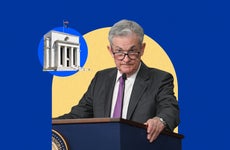
Will stubborn inflation force the Fed to raise interest rates again?
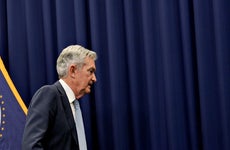
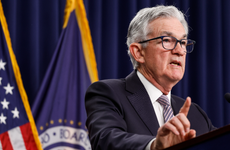
Fed holds off on interest rate hike but sees more increases coming this year
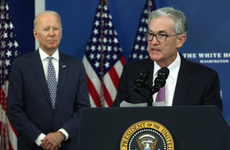
Fed sees three rate hikes in 2022 and speeds up its taper of bond purchases